Photo
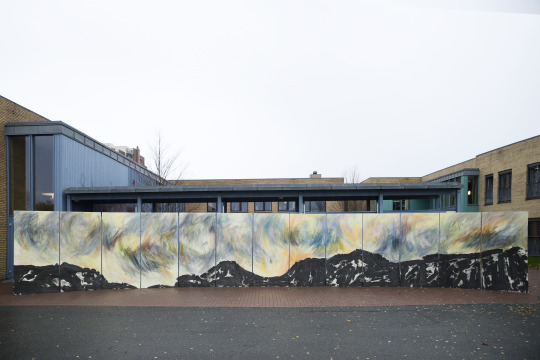
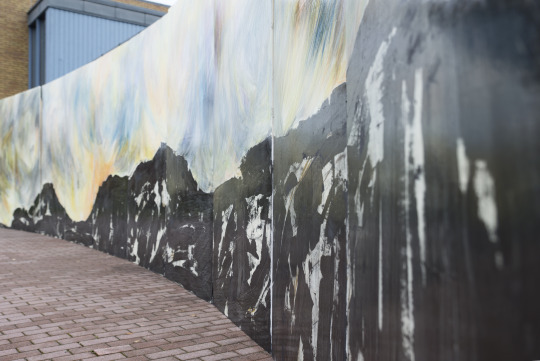
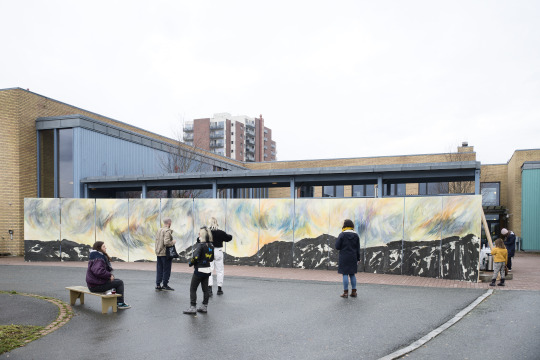
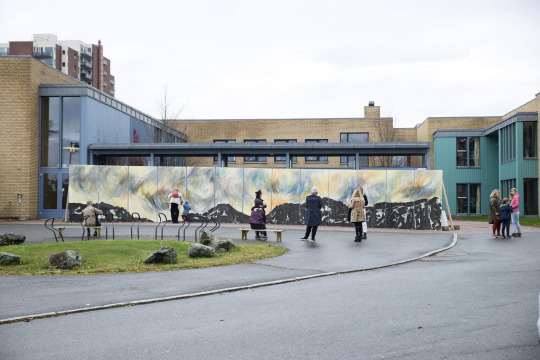
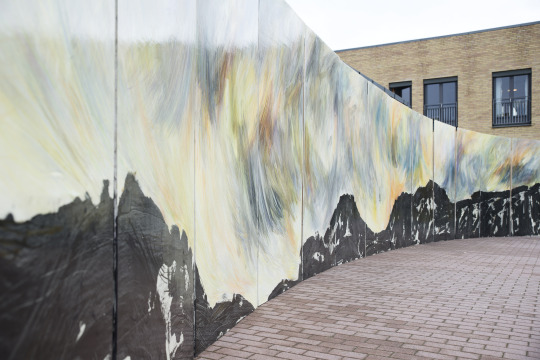
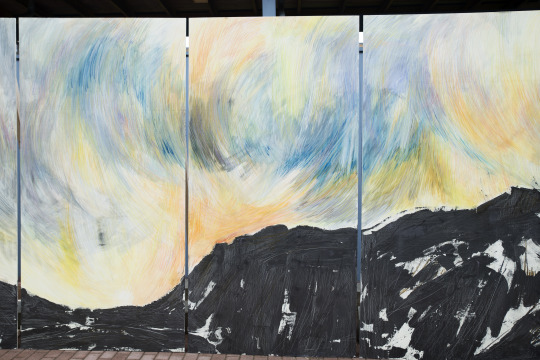

TEMPE #7
Agnieszka Foltyn – Tempest
9 – 17 October 2021
Open all day/all night
at Tempe Atelier
Tempest is 2.44m x 16m, watercolour pastel, graphite, and charcoal on panel with varnish.
The exhibition is supported by Trondheim kommune, Trøndelag fylkeskommune, and Kulturrådet.
The term diaspora refers to a scattered population, having moved somehow en masse from an indigenous land but often taking many different trajectories. The term has come to symbolise the experience of people who identify with a homeland, but who live outside of it. But what land is home?
Borders are human inventions, specifically political inventions created to control and mould certain spaces according to specific sets of values and intentions. Forces that produce mass movements are often violent and oppressive expansionist claims to new territories. These colonial attitudes lay claim to how people should be, act, move, think and learn under the guise of a dominant culture. But people move for different reasons also. Perhaps we have always been nomadic, from the core of our earliest memories, and have sought other spaces to support the different ways we live our lives: what the land can provide and how it changes over time, presenting different spaces for intersecting and corresponding forms of living. Our world now, too, is changing. And people move in search of better living conditions, accompanied by trails of emotional connection across vast distances, times, histories, and threads of belonging.
“I have been an immigrant in every place I have ever known as home,” is a sentence that has had to grow with me into articulation, and has only recently emerged consciously. The Welsh term Hiraeth has found new resonance in the strokes and spaces of the work Tempest. Hiraeth has no direct English translation. This language is much too strict and forward-looking to express for me an adequate equivalent, the kind you feel in your bones and in your being. Hiraeth is a feeling of homesickness, tinged with grief and sadness over the lost or departed, of a Wales of the past that perhaps never existed. This yearning or longing, this wistful, almost melancholic desire for something or somewhere that is present within us but that may never have really been and yet somehow always has. It can also be shared by many and is nestled within the most resilient and vulnerable place in our hearts. It makes space within individual understanding of place and all of its tendrils of meaning that collapse time, from which collective meaning emerges.
Natural topographical boundaries have historically served as enclosures of culture. In these, specific traditions have emerged from the making of meaning through rituals, histories and experiences in relation to place and time. Traditions shared between peoples emerged, that somehow, perhaps obliquely or in straightforward ways became rituals of shared understanding. It is important to have foundations so that we can build upon them. Their echoes resonate in shared practices that point to what is important to us as a network of connected people, even if those contemporary boundaries have been less self-determined and rather more imposed through the politics at hand.
But let us not imagine that global migrations have not been part of living since the earliest times. The stories of how we are, and how we are together or apart, have travelled across the globe, intersected with other cues and forms, have been absorbed through ritual and craft practices, through storytelling – the sharing and making meaning of exchange. This is how we learn from one another, with an openness to exchange, not appropriation. To lay claim is a powerful act. To have claim bestowed upon you is another.
Tempest explores these thoughts through one of the earliest forms of artistic expression: drawing. The movements of the body inscribe themselves across large planes of space, tracing feelings of loss, of longing, and of yearning while celebrating new rituals of inclusion and belonging. This hopeful melancholia or maybe melancholic hope is reflected in notions of utopia and dystopia. Is our dystopian future prefaced by utopian ideals? Or will our dystopian ways create the space necessary for a more utopian living? In a sense, each predicates the other and renders it static. These contrasts in mutual existence, present but in no way exclusionary, seem to mark the younger generations’ experience of the world today.
Standing on an elevation and facing the sea, this semi-imaginary landscape brings into being a mixture of the shores of my current home of Trøndelag, my heritage of Poland, my home country of Canada, and my birth country of New Zealand. Each landscape is characterised by its extremes – brutal and unforgiving yet breathtakingly beautiful meetings of land and water. Tempest is an allegory for our times, addressing through visual form the increasing nationalist and protectionist tendencies of politics worldwide, the movement of global migration and its histories of belonging and place, as well as the possibilities of culture as a platform for individual and collective exchange. Tempest is place of storytelling in search of home.
0 notes
Photo
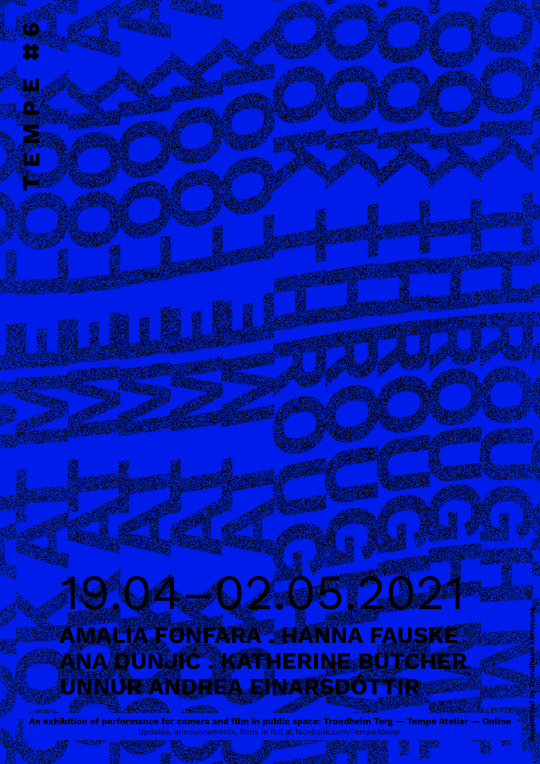
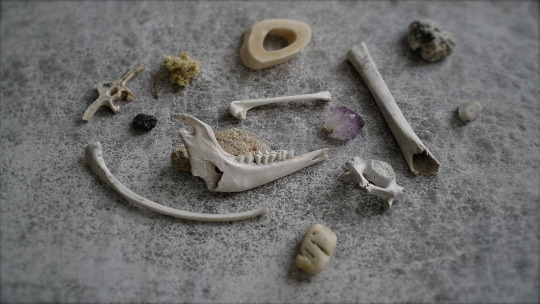
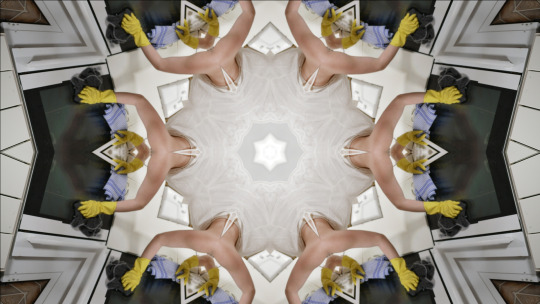

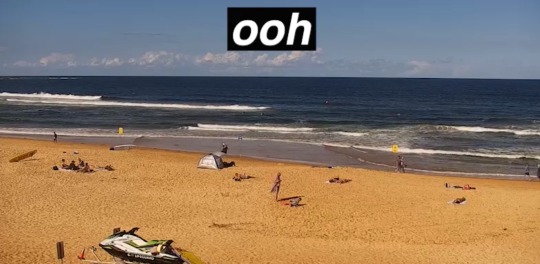
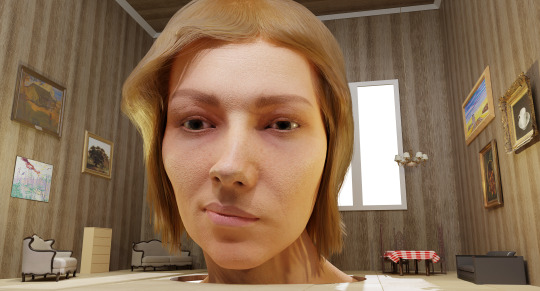
TEMPE #6
LOOK AT ME / LOOK THROUGH ME
19.04 – 02.05.2021
Digital performance and film program by five local artists screened at Trondheim Torg, Tempe Atelier, and online
Curated by Agnieszka Foltyn
Poster design by Joana Bruno
Artists:
Amalia Fonfara
Hanna Fauske
Unnur Andrea Einarsdóttir
Ana Dunjić
Katherine Butcher
TEMPE #6 addresses ways of living through performance-for-camera and film, putting to question how artists create, express and relate to the rapidly changing conditions around us. Five artists weave through the politics of being with visual narration of the everyday through two mediums: film and body. Their works question how art makes connections to site, people, and time through different formats of expression, tackling serious issues such as responsibility, accountability and care with humour, sensitivity and the absurd. TEMPE #6 is a claim into the everyday public life of our city.
The title refers to the viewer within the act of looking:
LOOK AT ME: in which the body of the artist is being watched
LOOK THROUGH ME: in which the audience looks through the frame as if through the artist’s eyes
Sites:
Trondheim Torg – advertising screen
Tempe Atelier – Valøyvegen 12 7031
Online at https://www.facebook.com/TempeAtelier
Live performance by Katherine Butcher Monday – Friday mornings at 7:00
Schedule will be announced at https://www.facebook.com/TempeAtelier
Event page: https://www.facebook.com/events/481640836621387
This project is supported by Trondheim kommune.
Images are property of each representative artist.
1 note
·
View note
Link
I have been writing interviews with exhibitors for Babel visningsrom for kunst in Trondheim, Norway since 2019. It's been such a pleasure to delve deeper into the undercurrents of concepts artists work with within their practice. To be able to pull out their intentions and make connections between their thoughts and their aesthetics has brought me to a new understanding between different forms of articulation and the power of relationships. Here is the text for artist Vilde Løwenberg Blom, who was artist-in-residence at Lademoen Kunstnerverksteder in 2020.
0 notes
Link
Estuary 4.0 is a continuation of the project Estuary by Afternoon Collective (Per Stian Monsås & Agnieszka Foltyn). It is a modular light installation that takes shape in direct relation to different sites and publics across Trondheim, Norway.
From October 20 - December 1st, Estuary 4.0 was a sculptural light installation hanging over two stories in the glass foyer of Rosendal Teater. Installed and taking down without announcement, Estuary aims to function as a catalyst for non-staged cultural experience that can weave through the experiences of the everyday. Estuary 4.0 stood during the darkest period here in the north, glowing in its own rhythm and intersecting with the pulsating life of the city.
0 notes
Photo


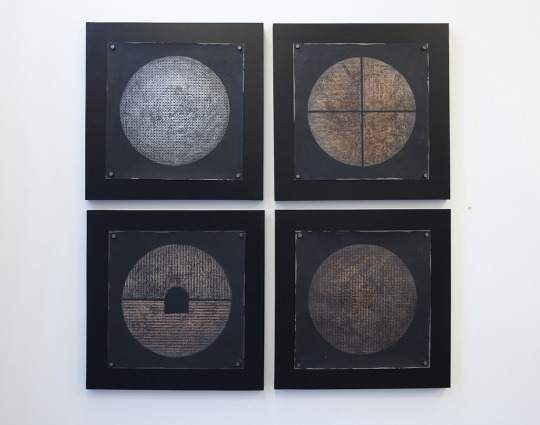
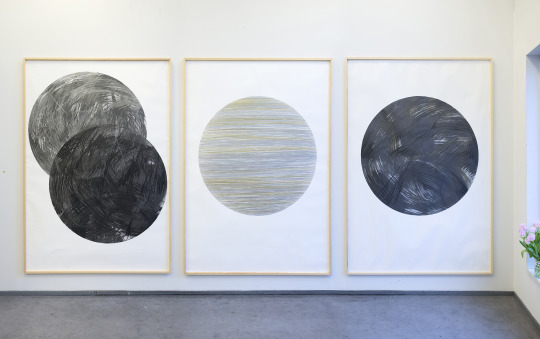
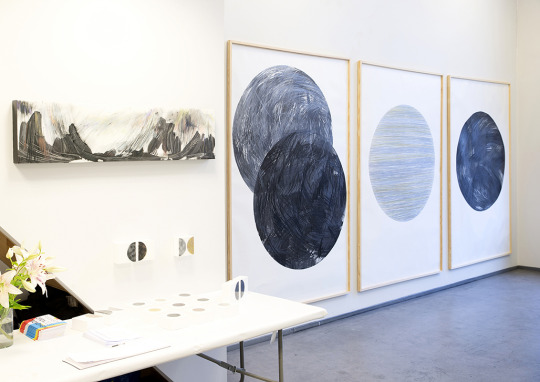
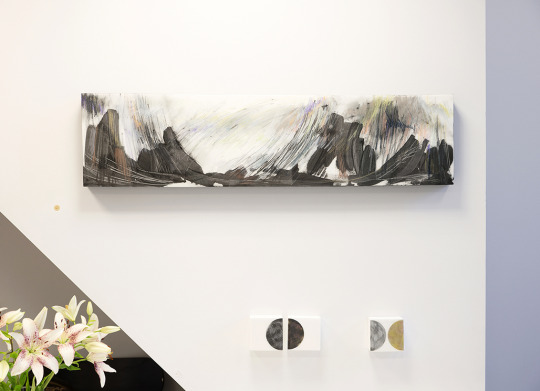

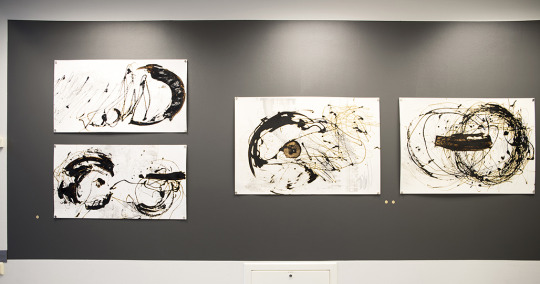


TEMPE #5 - The Bonds Between Us
Maya & Agnieszka Foltyn
November 5 - 15, 2020
Tempe Atelier, Trondheim NO
TEMPE #5 presents a collection of bonds over two generations of artists – Maya Foltyn & Agnieszka Foltyn. Having shared a studio for years and having exhibited together for many more, sharing and exchange became not only approaches of necessity but of love and care. By sharing space, we learn more about each other, we bolster, exchange, help, and communicate. We become better artists. The exhibition of paintings and drawings invites for comparison and relation, noting the moments of reflection, resonance and echo within two distinct but intermingling practices.
For more than twenty-five years, Maya Foltyn has explored the intuitive relationship between site, memory, and mark-making. Through processes of sensorial translation, Foltyn’s paintings, drawings, and photography delve into the imprints of lived experience. Her practice connects, translates, and re-examines affective connections between memory and aesthetics, communicating a language of impressions of being-in-the-world.
https://www.mayafoltyn.com/
Agnieszka Foltyn is an artist, curator, and writer. Her practice is centered on the possibilities of affective relation between site and the public most frequently through large-scale drawing, site-specific installations, and performative interventions. She founded Tempe Atelier artist-run centre in 2019 after receiving the studio fellowship from the Trondheim Kommune. She is the deputy leader of the Trondelag Bildendekunstnere.
https://mishifoltyn.tumblr.com/
Tempe Atelier is an interdisciplinary artist-run exhibition space for professional contemporary art. Located in Tempe sykehjem, it creates an active connection between art, public, and site. Tempe was founded as a space within which to explore innovative curatorial formats within contemporary art today. Tempe Atelier fills a critical gap in the exhibition scene in Trøndelag as one of the only remaining artist-run spaces for contemporary art in Trondheim.
https://www.facebook.com/TempeAtelier
0 notes
Photo
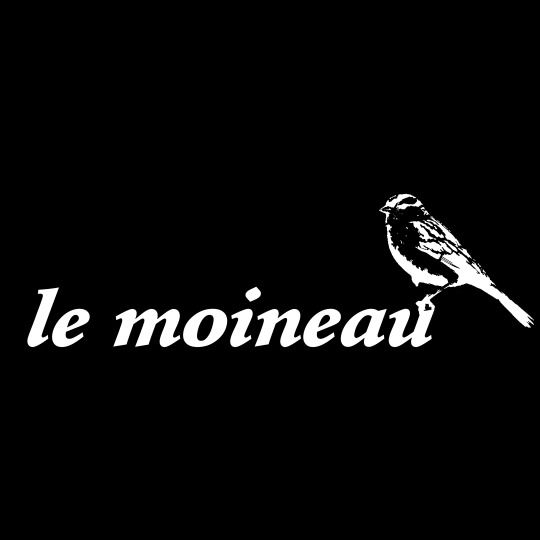
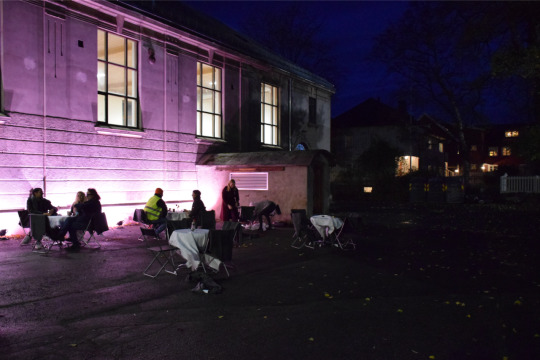

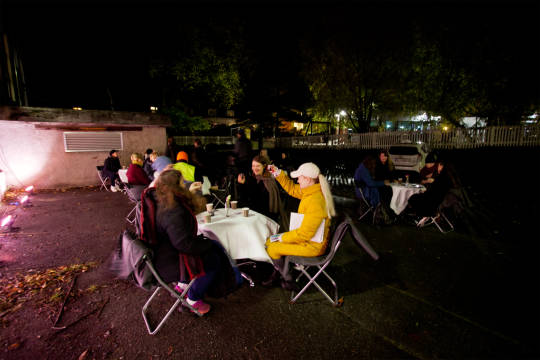
le moineau is an artist café of the night set in a possible dystopian realm. The project, by Afternoon Collective (Per Stian Monsås and Agnieszka Foltyn), was curated by Carlos A. Correia and Dan Skjæveland as part of the opening of Gymsal for Trondheim Open kunstbiennale.
Round tables laden with white tablecloths stand surrounded by blanket-draped chairs. Each has a single rose and a tea light, lit the moment table service begins. As Edith Piaf’s iconic La Vie en Rose plays continuously, brave guests, having received no instruction, choose their seats. Immediately they are served a cup of steaming black coffee and a small glass of black liquorice liqueur. No orders are taken and no directions are heard. Every time a guest takes a seat, drinks are delivered to the table. Pink filtered lights illuminate the back wall and small café sign - le moineau - in honour of the singing sparrow, on corners turned concerts turned recordings worldwide. And so, the night continues, with dregs of coffee black and words of love clinging to the air.
Top two photos by Maya Foltyn.
Bottom photo by Hasan Daraghmeh/Trondheim Open.
0 notes
Photo

Estuary 4.0 at Rosendal Teater
21.10.2020 – 30.11.2020
A monumental installation by Afternoon Collective (Agnieszka Foltyn & Per Stian Monsås)
Estuary is a modular, glowing atmospheric installation made of plastic balls and string LED lights. A textural object by day, the installation comes to life with the changes in light as the season progresses into darkness. Working together as Afternoon Collective since 2016, we aim to highlight the role of art in every day spaces and life through projects spanning many creative and artistic disciplines that respond to and grow from site-specific situations and spaces.
Estuary focuses on the relations between public and site. It has previously been shown in different sizes and formats. In 2019, it was shown in the historic cellars of Bakke Gård for Kulturnatt Trondheim and at Tempe Atelier artist-run center in collaboration with musician/composer Henrik Munkeby Norstebø. In 2020, it was exhibited at Erkebispegården.
Estuary is supported by Trondheim Kommune Strakstiltak.
Thank you to Rosendal Teater, Erin Murphy, Joana Bruno and Katherine Butcher.
0 notes
Text
This exemplifies the problem perfectly.
"On Wednesday 5 August, the deadline was for a "corona scholarship" for artists, but it is a project scholarship, not emergency aid. This means that artists must present a project they want to carry out, and thus this is not money that will go to subsistence for an emerging, unexpected crisis."
(https://www.dagbladet.no/kultur/har-spist-lite-og-sultet/72718016?fbclid=IwAR0HBpFGc7RlnZiQPsnqC7ksocd-jCE5gSEOB92vfrGEovQTtYwfF8Y3NXs)
The economic pressures and constraints in funding artists face when writing budgets often means that labour, especially artistic labour, is sacrificed for the sake of the realization of the project. Its normalization in bureaucracy has led to a value system in which salary (money for subsistence necessary for life) is placed last on the list for artists. Funding schemes are often split into smaller increments to expand support to a larger total number of projects. But when there is not enough funding, priority goes to things that cannot be bartered, traded or exchanged in non-economic ways. So what has an established value within the commercial market takes priority. This has historically been the backbone of the working poor – to exchange physical labour for access.
We all want to see many artistic projects funded. But these projects must contend with grant schemes that have not grown proportionately to inflation or to demand/need. And projects are increasingly being positioned as community-oriented initiatives meant to serve key political agendas – this year projects for youth are prioritized, last for the elderly, next year integration, perhaps. This hierarchical demand can be useful but it also underlines the principles and values at play in artistic production and selection. Why is art being made? For what? What is artistic integrity? What should form the crux of artistic work?
Pressures of spectacular production within the accelerated professionalization of the field – high quality exhibitions that are sure to amaze and impress the viewer - put pressure on artists to make a lot with very little. Making do has become the running joke of the starving artist stereotype. But artists are resourceful and one of the tactics used is the exchange of labour in lieu of monetary economy.
Part of the problem is not having established rates for different types of artistic work – like other disciplines have, usually established by unions – and part of it is a system that is largely predisposed to paying minimums for labour. It is difficult, though, to establish rates for artistic work that is often carried out independently and with large variation. And which is shown largely in underfunded cultural networks undercut by years of neoliberal governance (unregulated market expansion), austerity measures, populist pressures (appealing to the lowest common denominator), and varied conservative leadership.
One foundational challenge faced by artist associations is their inability to function politically as unions and to establish or govern value for artistic work, even if that work is recurring labour in cultural institutions. As an association, its work is differentiated by its close ties to administrative cultural and political domains as a liaison or consultant position. These positions uniquely give artist associations the possibility of sharing the values, conditions, and expertise to bureaucratic arms that directly influence how artistic regulation is formed. But legally they are unable to set standards for how artistic work should be or could be monetarily regulated. Associations are wary to venture into economic conversations with cultural institutions using artists for labour and political cultural administration for fear of being closed out from the discussion. And this forms the crux of the problem: few references for labour costs and minimal available funding with an increasing need for the social and other societal benefits of culture puts pressure on both independent artists and cultural institutions to fill that demand with inadequate funding. But in the game of numbers, what we fail to recognize are the real life costs artists face in the fundamental trade of labour for access. Balancing budgets to fulfill expectations and really, just to get by, cuts out income that is otherwise guaranteed in almost every other sector: a living wage.
0 notes
Video
Tumbleweeds is a collection of large-scale drawings based on the relationship between the image and the body. It functions as a representation of the concepts of signifier (format), signified (concept), and sign (the combination of signifier and signified as one meaningful unit).
Tumbleweeds is taken from distant memories of being the desert: the quality of the line and sharp contrast of light and dark. They are physical interpretations of a cyclical revisiting of memory. The desert is a place of vast expanse and timelessness, an immense landscape of intertwined existence. The work plays with the representation of shifting memories, applying these as drawing techniques: the central focus of the line, carving sharp traces through both applying pigment and taking it away, size as nuanced echo of desert as site, etc. It is important to me that the creation of these drawings echoes the physical impressions of the site on the body, my own, relived through the making of these works along the same efforts: the dryness of desert climate and graphite powder, the constant dust of sand and graphite, the strain on the body while moving throughout the space, the shimmering effects of the sun through thin lines of gold, the atmospheric perspective mirrored in the soft application of layers of powder, the monumental size and the vastness of landscape. The reinterpretation of the image into new formats leads to exposing new depths of the concept of the image as a framing of morphing layers of memory and reality.
0 notes
Photo

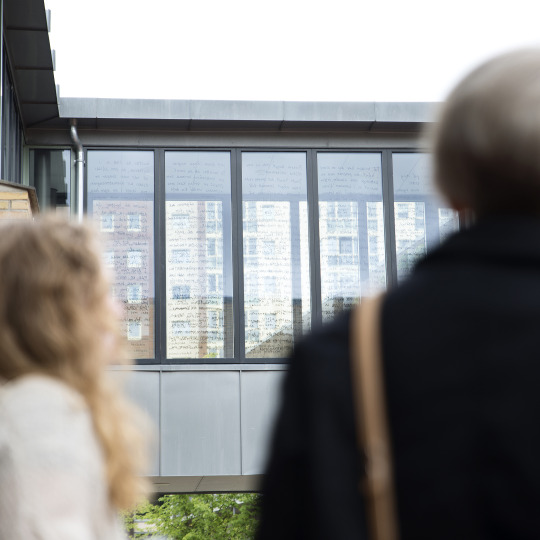

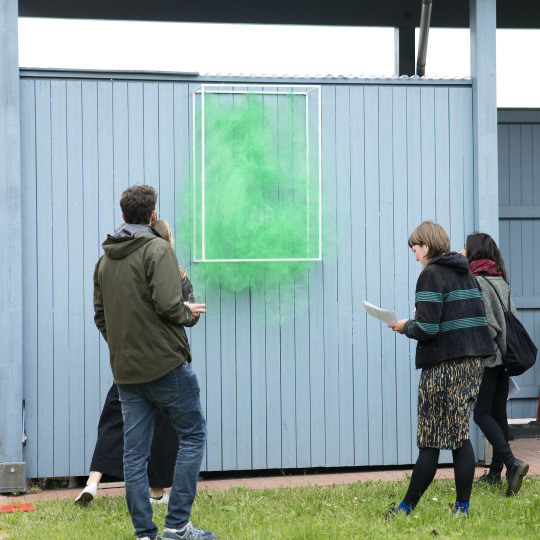
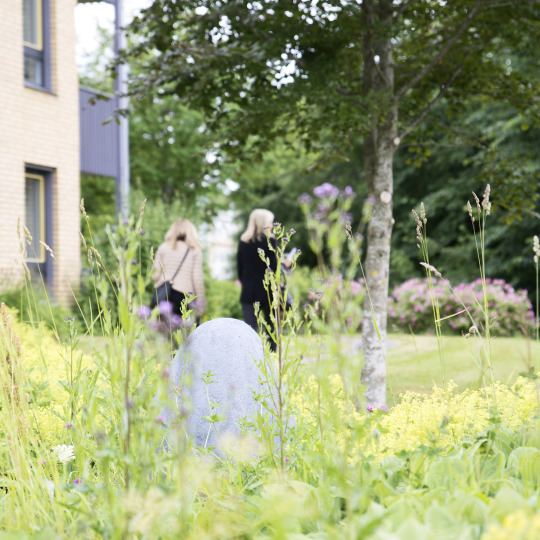
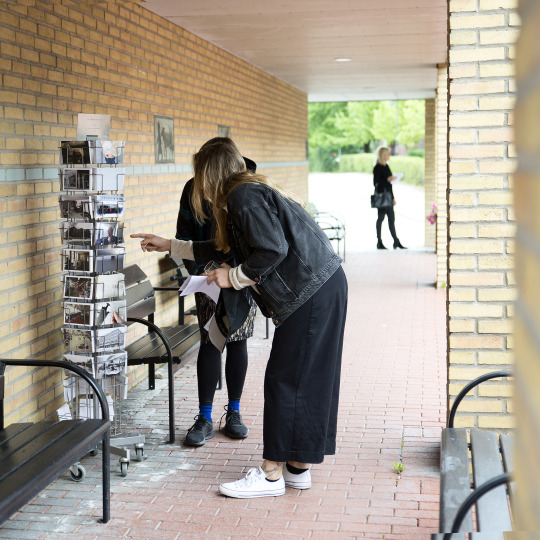



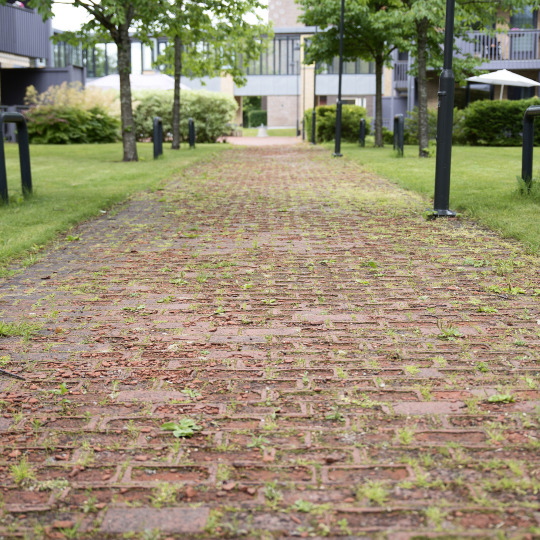
TEMPE #4
Cementing Continuity
An exhibition of sculptures and performative works as public art
July 11 - August 9, 2020
Celebration on July 11 at 16.00
Tempe Atelier
Cementing Continuity is a public art exhibition of sculpture and performative work by professional artists from a range of backgrounds, cultures, and experiences with a connection to Trøndelag. It runs from July 11th to August 9th, 2020 outside, on the grounds of Tempe helse- og velferdssenter. Artworks are installed and performed on their own timelines and communicated through regular updates on the event page and at Tempe Atelier.
Märit Aronsson
Hertling & Andreassen
Per Stian Monsås
Oscar Eriksson Furunes
Sofie Clausager Sörensen
Anne-Karin Furunes
Per Ellef Eltvedt
Carlos A. Correia
Agnieszka Foltyn
With an essay written by author, professor, and curator Maaretta Jaukkuri found on site in the handbook or online on the Tempe Atelier Facebook page.
Curated/supported by Carlos A. Correia and Agnieszka Foltyn.
Design by Joana Bruno.
Photos by Per Stian Monsås.
The exhibition takes as its foundation the essence of artistic work - the producer - and brings back the role of the curator to its roots, the Latin curare - to take care. The artist becomes the hub from which the surrounding exhibition infrastructure is built, to a large degree dictating the conditions, context, timeline, production, and relations between the artwork, artists, public, and site. Cementing Continuity underlines the importance of artists, whose production forms the basis of the cultural sector, and emphasizes the importance of uncertainty, experimentation, and dialogue as key elements in the development of the field. It questions who makes the decisions, how they are made, and for what, exploring dissemination as a tool that expresses value and how these structures operate within contemporary artistic work.
It complexifies the roles of artist and curator as a means of challenging habitual or traditional role delineations. Using dialogue as a fundamental approach, the exhibition itself forms the visible outcome of experimentation in power structures, agency, the onus of responsibility and a collaborative approach to dissemination. Artists are encouraged to explore the possibilities of the context, using uncertainty and the potential of failure as tools in reimagining past work or actualizing new trajectories within their practice. It re-envisions the role of the curator as a support position orbiting the inherent value of the artist as producer. By centering all action around the communicated vision of the artist, the works realize their own agency within a relational context of the exhibition: in meetings with the Other.
PROGRAM
Carlos A. Correia's performance Try Again will take place on July 19th and 21st as well as August 2nd at 12.00.
Trace the movement of Oscar Eriksson Furunes' sculptural work titled Stretcher II (Røstrevet) as it moves across the courtyard in search of new connections.
Revisit Anne-Karin Furunes' grass plaited spiral Håholmen 1987 – Tempe 2020 as it grows over the next weeks.
Check the event and Tempe Atelier for regular updates. This exhibition is free, open, and accessible 24 hours a day/7 days a week on the grounds of Tempe helse- og velferdssenter.
FINISSAGE PROGRAM
From 10:00, Try Again performance by Carlos A. Correia
From 14:00, finissage with refreshments by Afternoon Collective (and a small market for taking home)
Many artists will be on site and Maaretta Jaukkuri's essay is available online and on site in the booklet.
Tempe Atelier publishes all information about events and site here:
https://www.facebook.com/TempeAtelier/
Tempe Atelier is supported by Tempe helse- og velferdssenter, Trondheim Kommune , Trondheim Kommune, Trøndelag Fylkeskommune and Kulturrådet.
0 notes
Photo
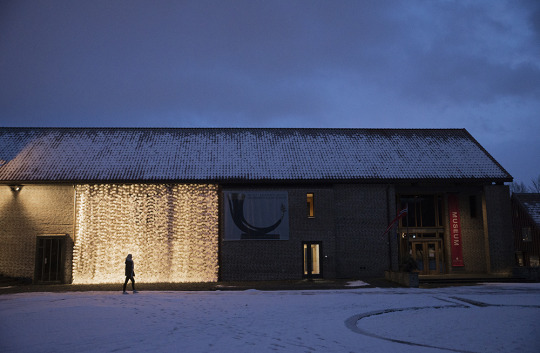

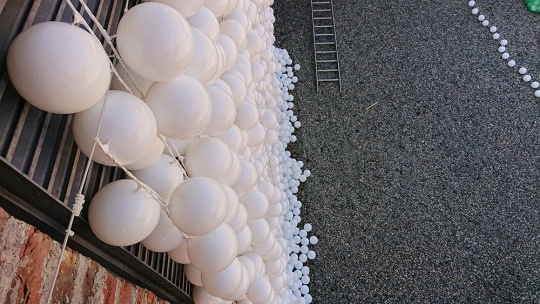

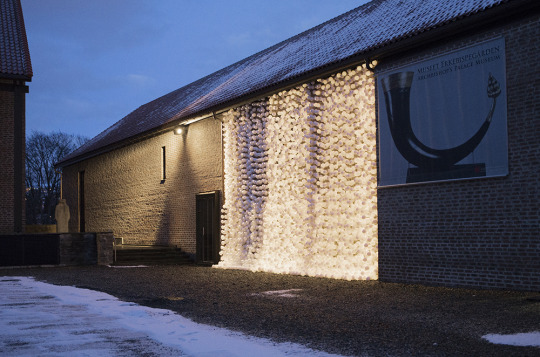

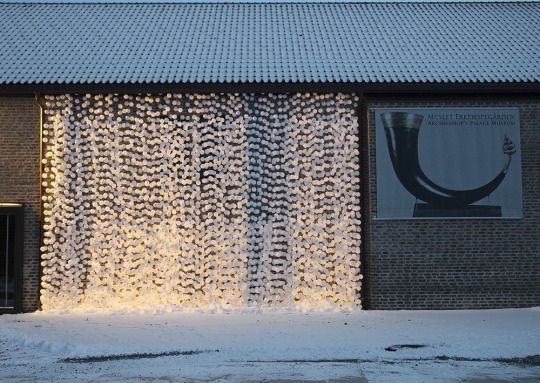
Estuary 3.0
- a public art installation by Afternoon Collective (Agnieszka Foltyn & Per Stian Monsås) at Erkebisbegården in Trondheim, Norway from March 12th to April 30th, 2020.
0 notes
Link
(https://vimeo.com/400381759)
Estuary 3.0
- a public art installation by Afternoon Collective (Per Stian Monsås & Agnieszka Foltyn) installed at the Archbishop’s Palace (Erkebispegården) in Trondheim from March 12 - April 30, 2020.
In early March, the Norwegian state ordered the closure of publicly funded institutions, under which the vast majority of culture was categorized. At that moment, the precarity of culture’s infrastructure was exposed and its connection to the public was broken. Since then, there has been a rush to sustain levels of engagement in online formats, though these formats have predominantly utilized the same institutional models for the dissemination of art and research: white cube digital shows, chaotic zoom lecture-‘discussions’, and an increase in sales marketing.
The shift from physical to digital has also shifted the presence of artistic work, at the same time upholding the perceived status of institutional models of artistic dissemination with an increased reliance on personal networks of connection. The outcome is a fragmented dystopia of both solidarity/unification as well as an exposure of the precarity of existing infrastructures. A new situation calls for new modes of working.
The monumental scale public art installation Estuary 3.0 opened the day the state imposed public closures. Its location in a medieval era courtyard, the largest tourist site in the region of Trøndelag, is sparsely populated, now seen only by locals on their traditional daily walks and through glimpses of social media posts linked by a massive online network of connections. It creates a fragmented network of cultural echo: with visitors in the same place but at different times.
The installation remained present during the time of the strictest lockdown measures imposed by the state to prevent the spread of the virus. From March 12th to April 30th, it functioned as a beacon for the subtle life of enduring artistic work. In this sense, its presence and context imbued it with symbolic meaning, pointing to the persistence of artistic production regardless of its public exposure - specifically in digital marketing and social media. The installation created connection by providing an artistic experience that could be shared - being in the same place but at different times. But for now and in its essence, art lives on most fervently in its continued production in intimate and interior spaces.
From March, Estuary 3.0 formed the only (major and temporary) public artistic presence of contemporary art in the city of Trondheim: accessible, open twenty-four hours a day, seven days a week. As a large-scale textural art object during the day, it also illuminated the nights in its fluctuating rhythm. There is something to be said about artist-run initiatives and independent projects - independent from the established circuit of cultural institutions - and the role of these projects within the cultural landscape of cities (etc.). With the abrupt closure of publicly-funded institutions, the physical and public presence of art was taken up through the agency of individual actors. By the end of March, Estuary 3.0 was joined by the Windows (Vinduene) project by collective Sla på kunst (Inga Skålnes & Carlos Alberto Correia) which exhibited a selection of artistic work in commercial window spaces across the centre of Trondheim.
Though Trondheim has an impressive collection of public monuments, these public works represent a much longer approach to time. They often aim to integrate themselves into the natural landscape or echo it in different ways. Monuments also often are used to commemorate a historical happening or zeitgeist that is encouraged to become part of the collective memory of a place. Temporary artist-driven projects form a living connection to current global art practice. They often re-imagine concepts present in the collective consciousness of a place and explore current social contexts as well as the impacts of the social urgencies of today. They look to the past but they also look to the future, all the while being firmly situated within the here and the now.
The times in which Estuary 3.0 was installed called for a more nuanced and subtle approach. Though the work is in monumental scale, it aimed to form relations to its site, the times, the weather, and all of the individual glimpses and encounters along the way. Its aesthetic language, simple and repetitive, reflected the tedium of our days and our habits, the tedium of work and labour but also the clarity and possible meditative nature of this type of practice. At its core, Estuary 3.0 was an invitation to share time and space in new ways, bridging the personal and the common through disparate and shared experience. It made room for the viewer or passer-by to initiate contact or to navigate the experience according to their own terms and in their own time. And it changed, just like the times change, in fluctuating and almost random rhythms of light as the sky darkened into night. But this, too, was fleeting, as the spring days eclipsed the night in seasonal change and the glowing spheres returned to their daylight form as static objects of the multitude.
0 notes
Photo

Estuary 3.0
- a public art installation at Erkebispegården by Per Stian Monsås and Agnieszka Foltyn
March – April 2020
Estuary is a large-scale public art installation at Erkebispegården from March until April 2020. It is a modular light installation that responds specifically to the site and context within which it is placed.
Estuary has been shown in other formats, sites, and in collaboration with other disciplines at Tempe Atelier and Bakke Gård in Trondheim:
Estuary 2.0 at Tempe Atelier with Henrik Munkeby Nørstebø in 2020
Bakke Gård with Henrik Munkeby Nørstebø during Kulturnatt Trondheim in 2019
(www.vimeo.com/365800746)
The glowing atmospheric installation creates new modes of possible interaction by weaving different sensorial formats into the specific conditions of the project. This exhibition focuses on the relations between public and site.
The goal of this project is to increase the visibility of art in the public spaces of the city of Trondheim. Through accessible and visible art, the public has an opportunity to interact with artistic practice currently being developed in the city. We aim to engage with a general public about what art is and what it can mean for the landscape of the city and the spaces it occupies. It is also a commentary on how artists navigate material choices within artist work, implying that artists must balance the line between materials relevant to their artistic work and the pressures to showcase new results.
This project is realized with the generous support of Kulturrådet and Nidarosdomen. We would like to thank Joana Bruno, Carlos Correia, and Anne-Karin Furunes.
About
Afternoon Collective is a multidisciplinary arts collective by Per Stian Monsås and Agnieszka Foltyn founded in 2016. Their goal is to highlight the role of art in every day spaces and experience. Through exploring possibilities for artistic intervention, they seek to continuously provoke a dialogue about art in a variety of contexts, forms, spaces, and moments in the public and semi-public spheres. Predominantly working in site-specific, monumental format installations and social performative interventions, their work is at once provocative, spectacular, ephemeral, subtle, monumental, temporal, long lasting, accessible, and mundane. More interested in art as laboratory than a specific messaging system of intention, co-creation and dialogue become integral elements of their projects that respond to the social urgencies of both the local context and musing about contemporary art as a whole.
You can find past projects here: https://vimeo.com/user20727966
Agnieszka Foltyn: https://mishifoltyn.tumblr.com/ & Per Stian Monsås: https://www.monsaas.com/
#contemporary art#public art#installation#monumental format#trondheim#nidaros#nidaroscathedral#erkebispegården
0 notes
Photo
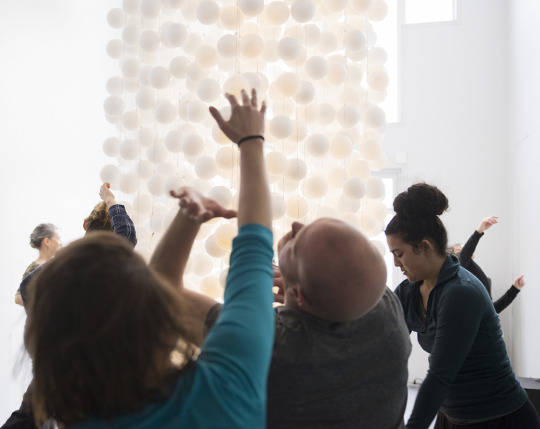

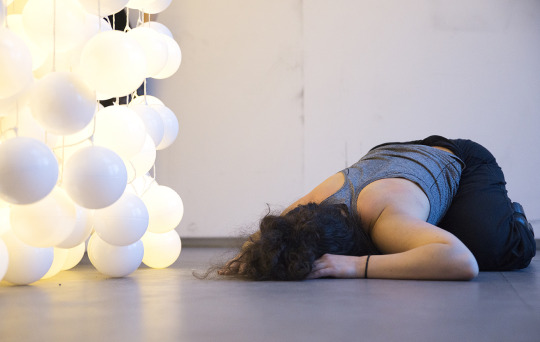
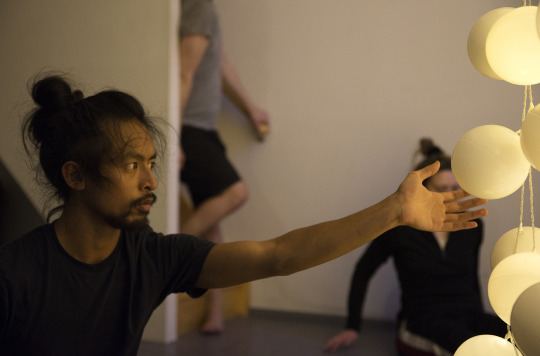


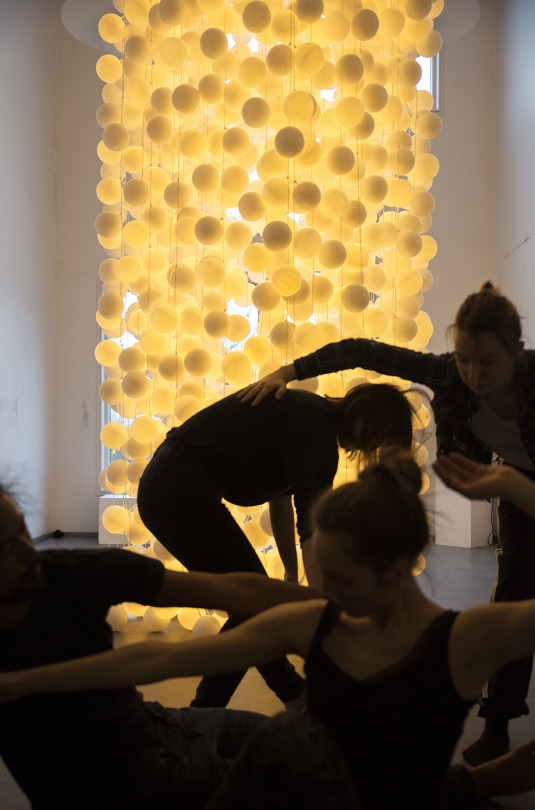

Estuary 2.0 at Tempe Atelier featured a public program exploring the relations between public and site facilitated through artistic work. The project, a collaboration between artists Per Stian Monsås and Agnieszka Foltyn (Afternoon Collective) and musician/composer Henrik Munkeby Nørstebø, was a modular light and sound installation that has been presented in various spaces and various formats across Trondheim. It explores how presence within a site in an artistic context can bring forth new possibilities of relation and understanding. The public program, which included a guided listening tour in collaboration with the Trondheim Kommune (municipality of Trondheim) and an improvised movement workshop with dancer/yoga instructor Anna Thu Schmidt, invited the public to participate in different modes of perception.
1 note
·
View note
Photo


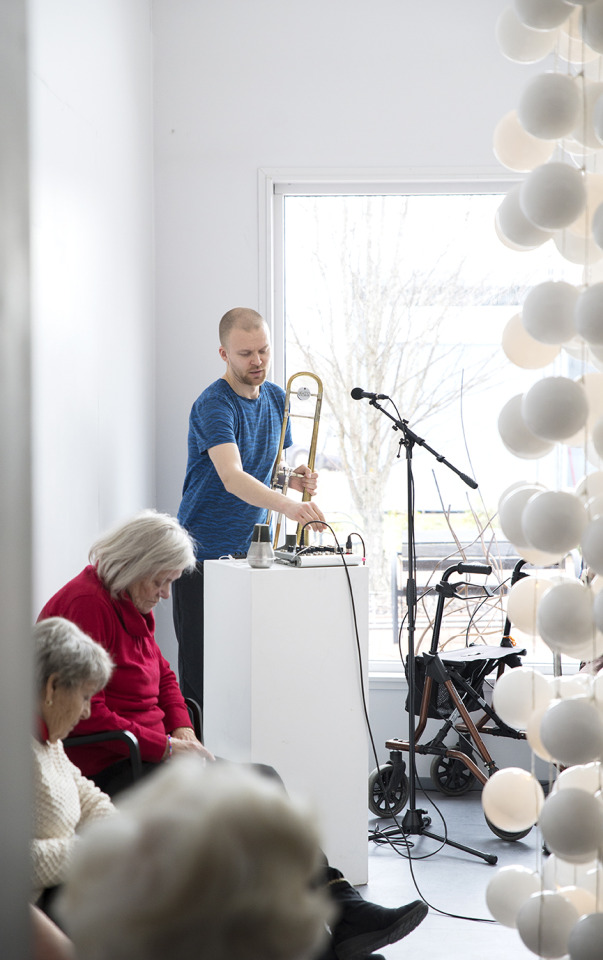
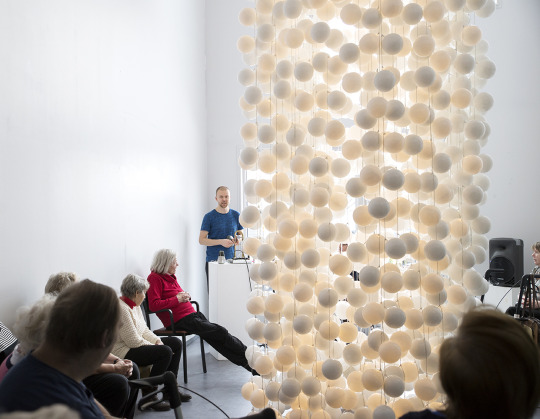
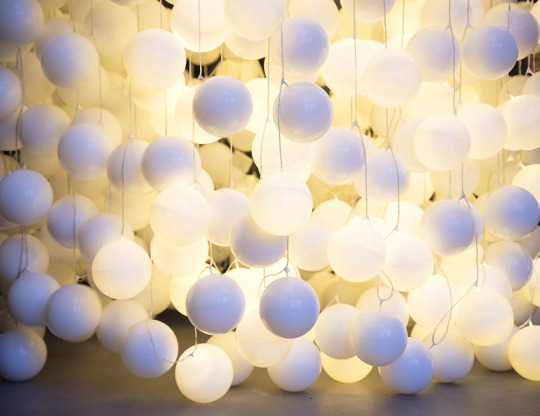
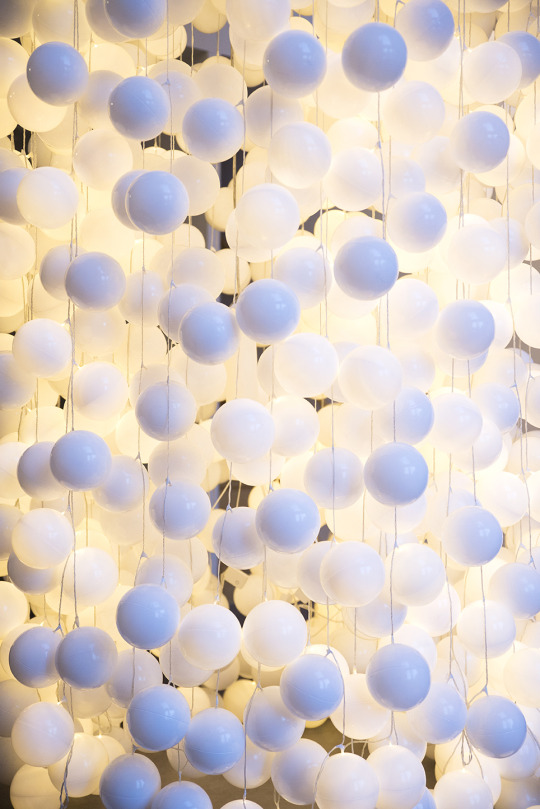

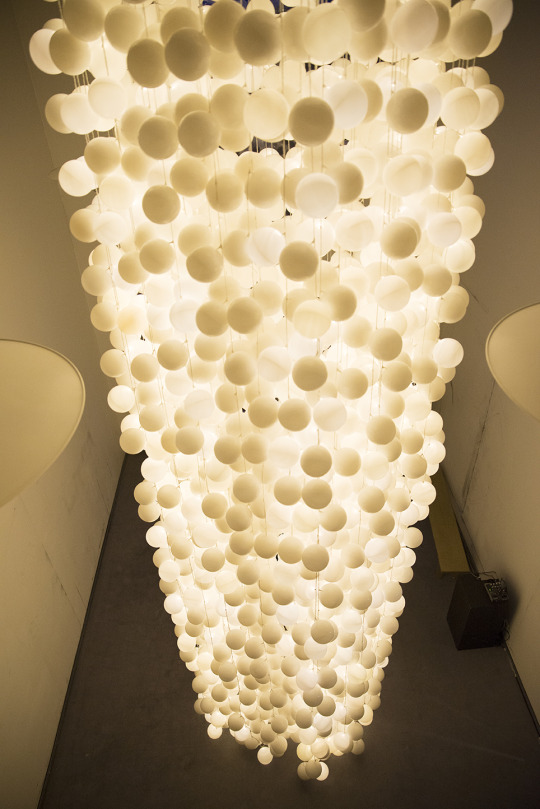

Estuary 2.0
- A sound and art collaboration between Per Stian Monsås & Agnieszka Foltyn and Henrik Munkeby Nørstebø
21. – 23.02.2020
Tempe Atelier
Valøyvegen 12, Trondheim NO 7031
21.02
12.00: guided listening experience
18.00: Live performance by Henrik Munkeby Nørstebø
18.00 – 20.00: opening reception
22.02
12.00 – 18.00: opening hours
16.00 – 18.00: ImproJAM workshop with Anna Thu Schmidt
23.02
12.00 – 18.00: opening hours
Estuary 2.0 is an immersive sound and art installation by Afternoon Collective (Per Stian Monsås & Agnieszka Foltyn) and musician/composer Henrik Munkeby Nørstebø. The glowing atmospheric installation creates new modes of possible interaction by weaving different sensorial formats (listening and movement) into the specific conditions of the project. This exhibition focuses on the relations between public and site.
2.0 is a continuation of the work Estuary, which was first shown in the historic cellars at Bakke Gård during Kulturnatt Trondheim in September 2019: www.vimeo.com/365800746
The exhibition and program are free and open to the public.
Tempe Atelier is an interdisciplinary artist-run exhibition space for professional contemporary art. Located in Tempe sykehjem, it creates an active connection between art, public, and site. It is run by a board of professional artists who actively research innovative curatorial formats within contemporary art today. Tempe Atelier fills a critical gap in the exhibition scene in Trøndelag as one of the only remaining artist-run spaces for contemporary art in Trondheim.
In 2019, Agnieszka Foltyn received the Tempe Atelier award, a private studio fellowship by the Trondheim Kommune Kulturenheten. Tempe Atelier is run by a board that organizes, curates, and hosts exhibitions and events that respond social urgencies within the local and global cultural landscape. Since 2019, Tempe Atelier has hosted two exhibitions: a group show featuring Håkon Bleken, Anne-Karin Furunes, Ørjan Amundsen, Per Stian Monsås, Carlos Alberto Correia and Anna Gudmundsdottir, and Agnieszka Foltyn as well a solo exhibition by William Bentsen. It remains a production space as well as a temporarily active artist-run space for the dissemination of professional contemporary art with a connection to Trøndelag.
Program
On Friday, February 21st at 12:00, the artists will host a guided listening experience open to the public. This workshop will focus on the different forms of experience in art and describe the work and the practice of the artists and musician. The workshop is in collaboration with Trondheim Kommune, Seniorkultur.
This site-specific ImproJAM at Tempe Atelier takes inspiration from Estuary 2.0. Through movement improvisation, we investigate the gallery space and going into dialogue with the artwork. Moving bodies are responding to elements as light, sound, form and embodying the artwork through a playful approach. The event starts with a guided movement exploration related to the multi-sensory experience of the installation before going into the open Jam where one can explore movements both alone and in the meeting with others. The workshop will take place on Saturday, February 22nd from 16.00 – 18.00.
ImproJAM wants to offer an open, free and safe space for movement and sound exploration based on dance, music and contact improvisation. The ImproJAM is lead in English. It is a free event and dance experience is not required.
Biographies
Afternoon Collective is a multi-disciplinary arts collective by Per Stian Monsås and Agnieszka Foltyn founded in 2016. Their goal is to highlight the role of art in every day spaces and experience. Through exploring possibilities for artistic intervention, they seek to continuously provoke a dialogue about art in a variety of contexts, forms, spaces, and moments in the public and semi-public spheres.
You can find past projects here: https://vimeo.com/user20727966
And here: https://mishifoltyn.tumblr.com/
Henrik Munkeby Nørstebø is a musician and composer specializing in trombone performance, as well as compositional projects utilizing heavy amplification of the brass instrument alongside external sound sources like half-clarinet and various noise generators. Nørstebø started his solo trajectory in 2007 and has since performed across Europe, North- and South America, Asia and Oceania. He is based in Trondheim, with deep artistic links to Berlin and Oslo, where he a.o. works with Audrey Chen (duo BEAM SPLITTER) and with the band collective Skadedyr.
You can find examples of Henrik’s compositions here: www.henriknorstebo.bandcamp.com
Anna Thu Schmidt is a dance artist based in Trondheim with a focus on dance improvisation, interdisciplinary projects, and integrated dance. Her work is often inspired by other cultures and the connections and communications between humans and nature. Her interest in the relation of dance to other arts leads to international collaborations and research on the intertwinement of dance and installation art. Anna is part of the integrated dance company Danselaboratoriet, organizing ImproJAM/ImproLAB and teaches contemporary dance and Hatha Yoga in Trondheim.
Design by Joana Bruno.
0 notes
Link
I wrote an interview with Oslo-based Artists Helene Duckert and Kjetil Dertroit Kristensen working as Duckert Detroit for the exhibition Blue Chip Baby at Babel visningsrom for kunst in Trondheim.
0 notes
Photo


I wrote a text about Circular Dimensions, an exhibition of sculptural ceramics and paintings and drawings by Ontario-based artists Heidi McKenzie and Maya Foltyn. The goal was to bridge these two independent practices through echoing experiences and moments in the artists’ lives.
Here is the text in full.
Circular Dimensions – Heidi McKenzie & Maya Foltyn
February 7 – March 1, 2020
Opening reception: February 7th from 7:30 – 9:30pmMeet the artists: February 23 at 2:00pm Circular Dimensions merges two distinct and individual practices, taking inspiration from personal experiences and collective histories from all over the world. Artists Heidi McKenzie and Maya Foltyn bridge and cross disciplines, roles, trajectories, and aesthetic languages in this ceramics and painting exhibition founded on circular movement. Join the artists at the vernissage on Friday, February 7th from 7:30 – 9:30pm at Carnegie Gallery (10 King Street West, Dundas, Ontario) and meet the artists at a special conversational event on February 23rd at 2:00pm.
A look into, around, and within Circular Dimensions, a ceramic and painting exhibition by Heidi McKenzie & Maya Foltyn
Text by Agnieszka Foltyn
“Everything is a balance between control and gesture,” Maya starts. This simple statement echoes a conscious act of negotiation of change or perhaps tensions in flux within our rhythms, our perceptions, and our responses to the world. It is a negotiation of the stimuli of phenomena that makes up our understanding of the world around us: its politics, its people, where we are, who we are, but importantly, how we are together.
The practices of Heidi McKenzie and Maya Foltyn touch and separate, intersect and cross over, flow in parallel, and divide in separate directions. These are not linear trajectories but rather circular or cyclical meanderings, stimulated and affected by the machinations of society throughout time. They are dreams, thoughts, extensions of a willingness to understand or to come into contact with the unknown. They are meditative, rhythmic techniques tailored to the individual lives of the artists. They express a subtle hope.
“Everything is in flux. That we see something as static is a form of abstraction,” Foltyn states. And in this exhibition, abstraction is key. Perhaps what draws us to this concept is a negation of the direct messaging of a qualified truth. In this present of fake everything, scripted bias, and media monopolies, what abstraction does is make space. It makes room for the viewer to determine their own position – through their movement within the gallery space, peering from one work to the other, from one artist to the other and back again. The viewer has the freedom to exercise their agency, their will to decide or not to decide, to determine or to not, to look, to question, to relate, to feel wonder. Making room for agency is a powerful political act. It creates space for a diversity of voices to be heard. The artists make space through the use of a minimal visual language, the round shape, the circular trajectory becoming a symbol of a journey – their own intersecting with many others.
Heidi McKenzie’s ceramic sculptures flow, grow, shape, twist, and turn as “soul sketches”, moments of her personal journey capturing a specific moment of her own development but at the same time resonating within the entire sum of her experiences. It is a moment, but one that points to the future. McKenzie’s practice brings her all over the world, connecting to people, places, skills, and techniques. Her background traces its roots across continents and her inspirations delve even further. “As an artist, it’s important to speak in your own voice – play in your own sandbox,” she begins. “Speaking in my own voice speaks to a lot of people.” The global movements of humanity over time have shaped our cultures and our viewpoints. Values and meanings have risen and changed. These intersections, moments of meeting, create a certain effect that resonates in other people’s lives. Paisley is a recurring motif in McKenzie’s work. “It represents both sides of my cultural heritage,” she states, referencing her Indo-Caribbean, Anglo/Irish roots. She draws a simple outline of its journey, originating as an almond shape in South Asia before making its way into the Scottish textile industry. While at a residency in Australia, she found herself exploring a particular shape. “That form came out of me in Australia,” she states, her arms outstretched. “There is a humanity that is connected to this shape.” The word excavate appears several times. To excavate: to dig something out, to expose something that is made meaningful in a new time. These works trace stories, identities through time and place, affected by meetings with other people, their cultures, and their traditions. These narratives are assertions of identity. But they stay away from appropriation, rather they comment on how interconnections with the unknown or the Other impact the ways we live now – and also how we move into the future.
Aesthetics are visual languages laden with symbols and meanings from the past and the present. They advance certain ideas, certain markings through moments in time and history. These languages have been used, appropriated, and redefined. “And why shouldn’t I?” McKenzie counters, when asked about this choice of visual language. Specifically the languages of minimalism and modernism have historically championed the division of the sexes and a Eurocentric viewpoint, erasing particularly women and people of colour from the annals of art history. But these movements originated in functionality, forms of categorization, and a use-function with the person in mind. “The fact that I am a woman of colour, it never made me repulsed by this aesthetic.” She continues, “What am I going to do that makes it different? And how am I going to invite a broader more pluralist audience to engage with these genres?”
A position is easy to betray or contradict. But a presence brings something completely different to the table – a seat. If we see the table as a place in which dialogue, community or exchange can happen, then taking a seat at this table is the most important act of all. It is a willingness to meet with the Other, a gift in a way, where the artist takes the first steps in reaching out, saying something of themselves with the hope of a response, a beginning. We assert our positions in this world through presence by bearing witness. In an age of increasing turbulence and concerns about our collective future, being visible is important. Being visible together is an act of solidarity.
“It’s important to have ideas and to make artwork,” Foltyn states. Art is a dynamic bodily happening. It is an expression of a specific spatio-temporal context. The phenomena of the surrounding environment, the thoughts and dreams and lived or imagined experiences are understood and come out through the actions of the body. Foltyn describes her work as a combination of interior and exterior landscapes, stemming from the junction of the mind and the body. It is a blend of memories and experiences, reacting into the moment through bursts of gestural movement and controlled, skilled technique. “I was never good at or drawn to react to the world realistically,” Foltyn states. She describes the teaching approach of professors in Poland in the 1980’s, which focused on the development of a specific individual style and on the mastery of technical skill within it. But for Foltyn this instruction was limiting. Education is for experimentation, with a freedom to try, to innovate, and to make mistakes. “Sometimes a mistake brings forth a new experiment.” She continues, “Art speaks to your perspective and point of view. It is what draws people in and what pushes them away. Those who are left are to be nurtured and grown from.”
Working across multiple pieces and compositions at once is an approach Foltyn uses to moderate between these two elements. “What is most important are the ideas that rise to the surface, that come out.,” she states. They come after a night’s rest, in the shower the next morning. Intensity and repose is also a rhythm. We often find that ideas come at moments of rest, during which the mind is free to dream. “It is the collection of different elements coming together,” she continues. “You pull them out, they come in. Sometimes it’s so intense you cannot sleep.” Abstractions don’t come from nowhere. She describes an intensification of many stimuli, phenomena, and emotions that are processed during moments of rest. “It’s not that it all comes from an experimentation of different gestural forms,” she says. But this is way of learning, too. The movement of the body taking internalized forms of being and translating it into visual forms of articulation. They say something. These are wishes, not only coming to the artist from the outside but also hopes for something else. This embodied method of working provokes ideas, thoughts, drawn from the subconscious more than from reality but having lived it all. Musing is an important process of understanding.
The artworks seem to be landing points for both artists – acts of making that serve as temporal reference points in the development of ideas, echoing rhythms of control and gesture. Alternate and embodied forms of articulation engage different types of knowledge. This process underlines the importance of making as a method of learning, sorting through information in an embodied way – taking part in the world, physically, emotionally, and mentally. We are corporeal beings. Through the act of making we come to a fuller understanding of being in the world. We also cement our presence – within the cannons of history, in art, in daily life, situating ourselves within histories in which many narratives have been omitted or made invisible.
The works in this exhibition convey very clearly the artists behind them, in a firm but accessible way. This exhibition is full of contrasts, brimming with nuance, time, and change. The viewer has room to feel it out on their own but always in relation to something there – the wondering of time immemorial, the cultures and roles of the people throughout history, the space we inhabit, and how we navigate our societies, perhaps our society as a whole.
1 note
·
View note